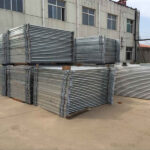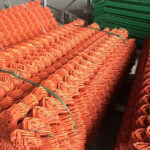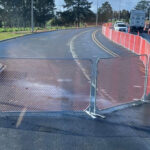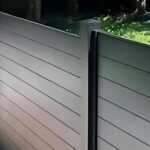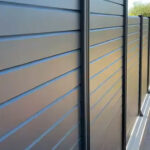How to Cut Cattle Panels: The Ultimate Guide for DIY Enthusiasts
Are you looking to tackle a DIY project involving cattle panels but unsure how to cut them? You’ve come to the right place! This comprehensive guide will walk you through everything you need to know about cutting cattle panels safely and effectively. Whether you’re creating a garden trellis, building a fence, or working on another creative project, mastering the art of cutting cattle panels will open up a world of possibilities.
Why This Guide Matters
Cattle panels are versatile and durable materials that can be used for various projects beyond their original agricultural purpose. However, cutting them can be challenging without the right tools and techniques. This guide will help you:
- Choose the best tools for the job
- Understand safety precautions
- Learn step-by-step cutting techniques
- Explore creative project ideas
Let’s dive in and unlock the potential of cattle panels for your next DIY adventure!
What Are Cattle Panels?
Before we get into cutting techniques, let’s quickly review what cattle panels are:
- Large, rigid wire panels typically used for livestock containment
- Made of heavy gauge wire, usually galvanized for durability
- Common dimensions: 16 feet long by 50-52 inches tall
- Wire spacing varies, often 6 inches by 8 inches
Understanding the material you’re working with is crucial for selecting the right cutting method.
Tools for Cutting Cattle Panels: Which One is Right for You?
Choosing the correct tool is essential for a clean, safe cut. Here are the most common options:
- Bolt Cutters
- Pros: Portable, no power required, good for precise cuts
- Cons: Requires physical strength, can be slow for large projects
- Angle Grinder
- Pros: Fast, effective on thick wire
- Cons: Generates sparks, requires power source, can be dangerous if not used properly
- Reciprocating Saw (Sawzall)
- Pros: Versatile, can cut through multiple wires at once
- Cons: Requires power, can be tiring for large jobs
- Wire Cutters
- Pros: Inexpensive, good for small jobs or touch-ups
- Cons: Not suitable for cutting entire panels, requires significant hand strength
- Circular Saw with Metal-Cutting Blade
- Pros: Fast, can make long straight cuts
- Cons: Less precise for intricate cuts, generates heat and sparks
Safety First: Protecting Yourself While Cutting
Before you start cutting, prioritize safety with these essential tips:
- Wear heavy-duty gloves to protect your hands from sharp wire edges
- Use safety glasses to shield your eyes from metal fragments and sparks
- Consider wearing a dust mask, especially when using power tools
- Work in a well-ventilated area to avoid inhaling metal particles
- Secure the panel to prevent movement while cutting
- Keep a first aid kit nearby in case of minor injuries
Step-by-Step Guide: How to Cut Cattle Panels
Now that you’ve chosen your tool and taken safety precautions, let’s walk through the cutting process:
- Measure and Mark
- Use a measuring tape to determine your cut lines
- Mark clearly with a permanent marker or spray paint
- Secure the Panel
- Place the panel on a stable surface or sawhorses
- Clamp or weigh down the panel to prevent movement
- Position Your Cut
- Align your cutting tool with the marked line
- Ensure you’re cutting between wire intersections for a cleaner result
- Make the Cut
- For bolt cutters: Position the jaws and squeeze firmly
- For angle grinders: Start the grinder before touching the wire, move steadily along the line
- For reciprocating saws: Use a metal-cutting blade, apply steady pressure
- Smooth the Edges
- Use a file or grinder to remove any sharp points or burrs
- Treat Cut Ends
- Apply a galvanizing spray to prevent rust on exposed metal
Common Challenges and How to Overcome Them
Even experienced DIYers can face difficulties when cutting cattle panels. Here are some common issues and solutions:
- Uneven Cuts
- Solution: Use a straight edge guide or chalk line for straighter cuts
- Tool Fatigue
- Solution: Take breaks, alternate between cutting methods if possible
- Warped Panels
- Solution: Cut on a flat surface, secure panel edges before cutting
- Dulled Tools
- Solution: Replace blades or sharpen tools regularly
Creative Projects Using Cut Cattle Panels
Now that you know how to cut cattle panels, let’s explore some inspiring project ideas:
- Enrejados de jardín: Create arched or vertical supports for climbing plants
- Esgrima: Build custom-sized fences for livestock or property boundaries
- Tomato Cages: Design sturdy, long-lasting cages for your vegetable garden
- Contenedores de abono: Construct a durable compost enclosure
- Decorative Garden Arches: Form beautiful entryways or garden features
For more fencing ideas and products, check out our paneles galvanizados para ganado y cattle horse panels for inspiration and high-quality materials.
Maintenance Tips for Cut Cattle Panels
To ensure your cut cattle panels last as long as possible:
- Regularly inspect for signs of rust or damage
- Clean with mild soap and water as needed
- Apply a rust-inhibiting paint or coating for added protection
- Store unused panels in a dry area to prevent corrosion
Preguntas frecuentes
- Can I cut cattle panels with regular wire cutters? While possible for small jobs, it’s not recommended for cutting entire panels due to the thickness of the wire.
- How do I make curved cuts in cattle panels? Use an angle grinder or reciprocating saw for more flexibility in creating curved shapes.
- Is it necessary to treat the cut ends of galvanized panels? Yes, treating cut ends helps prevent rust and extends the life of your project.
- Can I cut cattle panels with a hacksaw? While possible, it would be extremely time-consuming and not recommended for large cuts.
- How do I dispose of leftover cattle panel pieces? Check with your local recycling center for metal recycling options.
Conclusion: Mastering the Art of Cutting Cattle Panels
Cutting cattle panels may seem daunting at first, but with the right tools, techniques, and safety precautions, it’s a skill that opens up a world of DIY possibilities. Whether you’re creating garden structures, building fences, or embarking on unique projects, the ability to customize cattle panels will serve you well.Remember to always prioritize safety, choose the right tool for your specific needs, and don’t be afraid to get creative with your designs. With practice, you’ll soon be cutting cattle panels like a pro and bringing your innovative ideas to life.For all your fencing needs and expert advice, don’t hesitate to explore our range of puertas de paneles para ganado and other high-quality fencing solutions.
Key Takeaways:
- Choose the right cutting tool based on your project needs and comfort level
- Always prioritize safety with proper protective gear and workspace setup
- Follow a step-by-step approach for clean, accurate cuts
- Treat cut ends to prevent rust and extend the life of your project
- Get creative with cattle panels for various DIY applications
- Regular maintenance will keep your cattle panel projects looking great for years to come
Happy cutting, and may your DIY projects with cattle panels be both successful and rewarding!




